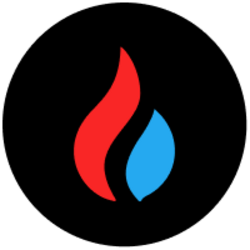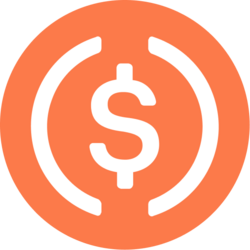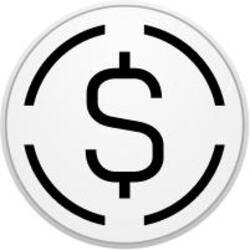Americans are embracing health and wellness — and none more than Gen Z and millennials. People are spending more than $500 billion in the United States on wellness, and it is growing at 4% to 5% each year, according to McKinsey . Nearly 30% of Gen Zers and millennials said they are prioritizing wellness “a lot more” compared to a year ago, the report said. In comparison, 23% of the older generations replied the same. Bank of America’s credit card data backs that up. Spending in fitness clubs, for example, has been rising across the board for several months, but it is Gen Z and millennials who are kicking it up a notch, said Bank of America analyst Alexander Perry. “We’re seeing increased prioritization of fitness by these generations and they’re behaving in ways that prior generations did not,” he said in an interview with CNBC. “They’re really prioritizing fitness first and foremost, but we also believe they’re prioritizing other healthy ways of living, focused on healthy eating, drinking, aging, to name a few.” For instance, the average Gen Z household spends 2.8 times more than baby boomers on fitness and allocates more than three times of their budget compared to the older cohort, he said. Foot traffic growth at fitness centers is also “well surpassing” that to bars and clubs, Perry said. “They’re adopting different leisure activities on the weekends,” he said. “The leisure-based activities that are seemingly healthy are what these younger generations are gravitating towards. We think this is pretty sticky and has pretty long-term implications.” That coincides with the rise of spending on non-alcoholic beer and seltzer, which has averaged 28 points higher versus alcoholic equivalents since 2021, he noted. Last year, per capita alcohol consumption fell 3% year over year, bringing it to a 10% decline versus the peak in 2021, according to Bernstein. That’s the lowest level the firm has seen since 1962. Meanwhile, the International Wine and Spirits Record (IWSR) has projected that non-alcoholic beer will overtake ale to become the second-largest beer category by volume worldwide this year. Still, after years of surveys showing the decline in alcoholic beverage consumption among the younger population, new data from IWSR is showing an uptick . Participation rates among Gen Z consumers have risen to 70% in the six months leading up to May, up from 46% two years ago, the drinks data and analytics provider said. Lastly, anti-aging and recovery products are also becoming popular among the cohort, Perry said. Google searches such as “cold plunge” and “red light therapy” are up significantly, he noted. Fitness club plays There are two fitness clubs poised to benefit from the focus on health and wellness by Gen Z and millennials, according to Bank of America’s Perry. Life Time is a high-end fitness provider that is identifying fast-growing trends pretty quickly, he said. One of those is pickleball, which is the fastest-growing sport in the U.S. “They were pretty quick to identify the pickleball trend,” Perry said. “They started repurposing parts of their clubs to pickleball courts, and now are one of the largest pickleball providers in the U.S.” The company has also started getting into the cold-plunge tub trend, which will also bode well for its long-term tailwinds, he added. Life Time has an average analyst rating of overweight and about 30% upside to the average price target, according to FactSet. LTH YTD mountain Life Time year to date Meanwhile, Planet Fitness is well positioned for the trend as the largest provider at a value-oriented price point, Perry said. In fact, the company has a high penetration of first-time gym goers, he said. “Their penetration in terms of Gen Z and millennials coming into a Planet Fitness has continued to expand and been very strong,” Perry said. The stock has an average rating of buy from the analysts covering it and roughly 7% upside to the average price target, per FactSet. Anti-aging opportunity SharkNinja is poised to capitalize on the anti-aging product trend with its light therapy mask CryoGlow, Perry said. The company was quick to identify the recent trend of healthy aging and red-light therapy face masks, he said. “If their past product portfolio is an example of what they’re going to be rolling out, I think that you’ll continue to see them play in this wellness space in a bigger way,” Perry said. The stock has an average analyst rating of buy and 14% upside to the average price target, per FactSet. SN YTD mountain SharkNinja year to date The alcohol story While it is uncertain what the new uptick in Gen Z drinking habits may mean for alcohol stocks, it is clear that sales are on the decline overall. Morgan Stanley said that the Gen Z cohort will likely not match prior generations as it ages when it comes to drinking. The firm said wellness trends like weight-loss and diabetes drugs, as well as an overall negative perception of alcohol’s health implications also play a part. Plus, the heavier drinkers are the older generations who will be physiologically unable to consume as much alcohol as they age, analyst Sarah Simon said in a note earlier this year. That means the zero-alcohol segment is “ripe for strong growth,” she wrote. The stocks she likes are skewed towards soft drinks and beer. Her top pick in the U.S. is Coca- Cola . She also likes Belgian-based Anheuser-Busch InBev, which trades in the U.S. under ticker BUD . KO YTD mountain Coca-Cola year to date However, Bernstein analyst Nadine Sarwat doesn’t expect the moderation of younger generations to remain permanent as they age. She also said economic pressure and the way social media has changed socializing has affected Gen Z’s alcohol consumption. “Once they enter full working adulthood, they are reverting back to drinking patterns of previous people in working adulthood,” she said. “What no one can agree on is why are they drinking less in those crucial years? Some of it is probably health and wellness. Some of it is probably social media, that it’s changed socializing. Some of it is definitely economic pressure,” Sarwat added.












































